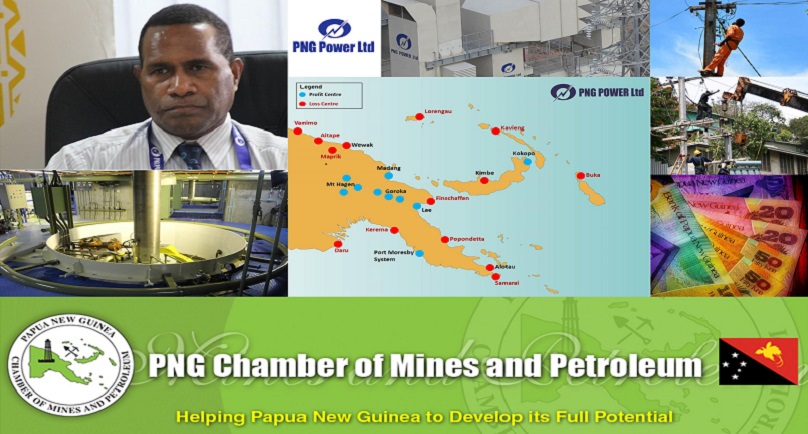By Hope Imaka – EMTV Online
Power generation initiatives are a big topic for many companies in the mining and petroleum industry.
With the financial strain facing PNG Power Limited (PPL) to date, power generation projects are proposed to address the many issues to power accessibility around the country.
Acting CEO for PNG Power Limited, John Yanis, elaborated on the challenges facing the corporation and the opportunities available for the company and stakeholders to take heed of.
Here are the key points from the address of Acting CEO Yanis:
Professional overview
In 2015, PPL supplied around 120,000 customers with 1,227 Gwh of electricity from 390 MW of nameplate generation capacity and had sales revenue of K891 million.
Despite having produced sales revenue valued at K891 million, PPL’s accounting indicates a balance less than the generated figures.
Power Grids across the country
- Port Moresby
- Ramu Grid (covers Highlands, Lae and Madang)
- Gazelle Peninsula
The Ramu Grid being the main income generating area for PPL, whilst all other centres being cost centres for the company.
PPL also supplies electricity to 16 regional centres predominantly by diesel powered thermal generation from around 75 smaller generating units. Tari and Arawa have been additional centres added recently.
Regulatory Environment
The Independent Consumer and Competition Commission (ICCC) is the economic and technical regulator for the electricity sector:
- Regulates prices for PNG Power;
- Regulates consumer protection;
- Monitors and regulates safety and technical standards; and
- Licenses of electricity generators, networks and retailers, electricians and electrical contractors.
The ICCC has delegated most of its safety and technical regulation responsibilities and duties to PNG Power.
Through the ICCC, PPL has four licenses:
- Generation
- Distribution
- Transmission
- Retail
Influences on PPL’s business
- Fuel Price – as at 2014, 40 per cent of running cost is on diesel
- Exchange Rate – due to the drop in commodity prices, PPL was unable to purchase US dollars to fund operations.
- Employment
Focus areas of PPL
PPL has identified their major strategic focus areas; these focus areas come under the main umbrellas of Power Generation and Distribution Network.
As stated by Yanis, PPL’s asset base is aged and new equipment is needed to replace these assets to meet the necessary service delivery and operational targets.
CSO (Community Service Obligation)
PPL has in place standardised tariffs nationwide. That being said, a diesel operating fuel grid, despite costing more, would in fact pay the same rate as customers in POM.
This is where PPL’s Community Service Obligations come in place. The company purely funds this, hence the term “Cost Centres” as used by Yanis.
Potential Investment Packages
- Nationwide Thermal Upgrade Program
- Nationwide Substation Upgrade and SCADA Implementation
- Nationwide GIS Database Program
A comprehensive GIS based database is nearing completion for POM that provides immediate information on all PPL’s operational assets down to every distribution pole and every customer.
Improves operational efficiency greatly and should be rolled out to all centers.
Hydroelectric Power Developments
The following potential projects require further investigating and progressing to implementation.
Replace thermal generation in the major systems and provide extra capacity to meet load growth including mining and major industrial developments.
All are potential IPP developments or Private/Public partnership arrangements.
- Naoro Brown (POM)
- Mongi Bulum Hydropower (Lae)
- Kaugel Hydropower (Highlands)
- Ramu 2 Hydropower (Ramu Grid from Yonki) (IPBC Feasibility Study Completed)
- Karamui Hydropower (Tua River – Simbu)
- Purari Hydropower
2015 budget Framework
PPL’s budget for 2015 is framed around reliability and quality of the service delivery. Most of the money generated from the services provided is reinvested into the power generation activities; ensuring the lights are kept on.
Moving Forward
PPL’s 15-year development plan covers power generation, transmission, and distribution needs throughout the country.
However, in light of PPL’s current financial situation, Yanis reemphasised the difficulty in executing the development plan.
”Considerable infrastructure development is required in the energy sector, to meet the significant growth in the power sector in the country,” he said.
Yanis states that providing economic energy to proposed mining projects is a challenge, as well as meeting the government’s objectives for 2030 and 2050.
“As a company, we are doing everything we can to make sure that the lights stay on.”
Yanis has invited potential investors to assist in the future proposals to meet the 2030 aim of covering all required networks across the country.


